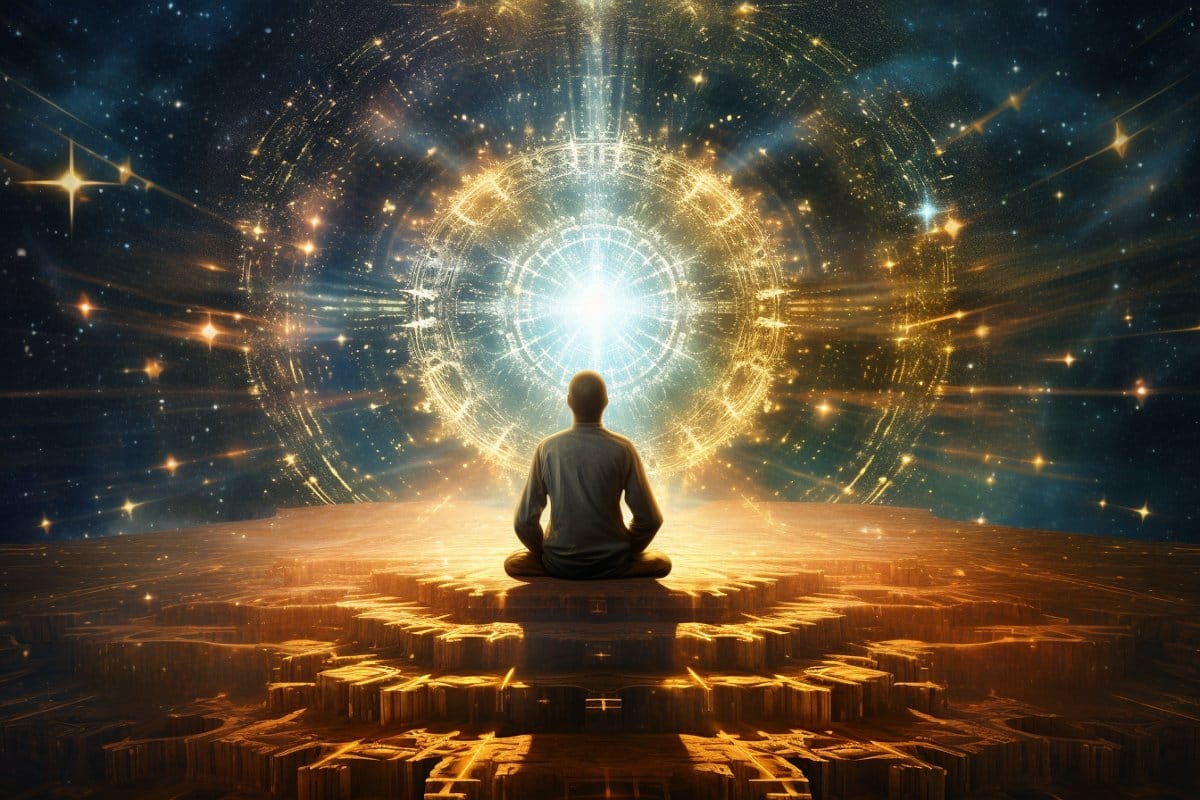Summary: Experienced meditators can voluntarily induce unconscious states, known as cessations, without the use of drugs. This ability, observed in Tibetan Buddhist practice, allows meditators to experience a momentary void of consciousness, followed by enhanced mental clarity.
Conducted across multiple countries, the study utilized EEG spectral analysis to objectively measure brain activity during these cessation events. By correlating the meditator’s first-person experience with neuroimaging data, researchers have gained insights into the profound modulation of consciousness achievable through advanced meditation practices.
Key Facts:
- Experienced meditators can voluntarily enter a state of cessation, momentarily losing consciousness without external aids.
- The study analyzed 37 cessation events in one expert meditator across 29 sessions using EEG spectral analysis.
- This research opens new avenues for understanding consciousness modulation through meditation.
Source: BIAL Foundation
A study reveals that experienced meditators are able to voluntarily modulate their state of consciousness during meditation. In other words, they have the unusual ability, without the use of drugs, to induce a momentary void of consciousness during cessations through large-scale modulation of brain activity.
In what situations can a human being lose consciousness? An anesthetization, brain concussion, intoxication, epilepsy, seizure, or other fainting/syncopal episode caused by a lack of blood flow to the brain can cause total loss of consciousness. But can unconsciousness be induced without the use of drugs?
In the event known as cessation (or nirodha, according to Tibetan Buddhist terminology), the meditators briefly lose consciousness, but upon re-awakening, they are said to experience significant changes in the way their mind works, including a sudden sense of profound mental and perceptual clarity.
Matthew Sacchet, together with researchers from Australia, the Netherlands, and the United States, realized that the idea that a meditator has the ability to “turn off” consciousness could have broad implications for our understanding of how cognition works, but they also found that previous research on cessation had several limitations, namely the fact that few expert meditators have reached the level of meditation where cessations occur, and that cessations are also difficult to predict.
In the article “Investigation of advanced mindfulness meditation ‘cessation’ experiences using EEG spectral analysis in an intensively sampled case study,” published in November in the journal Neuropsychologia, the authors reveal that, in this intensive case study, they overcame these challenges by recruiting one expert meditator who reported being able to enter and report multiple cessation events as they emerged throughout repeated meditation sessions.
The researchers used a neurophenomenological approach in which the “first-person” descriptions of the cessations are related to objective neuroimaging data. In other words, the expert meditator systematically evaluated the mental and physiological processes (context, input, event, output, after-effects) as he experienced them, and these evaluations were used to group and select events for subsequent EEG-based analysis.
Spectral analysis of EEG data surrounding the participant’s 37 cessation events recorded in 29 sessions made it possible to relate the cessations to objective and intrinsic measures of brain activity related to consciousness and high-level psychological functioning.
According to researcher Matthew Sacchet, “these results provide initial evidence for the ability of adept meditators to voluntarily and profoundly modulate their state of consciousness and lay the foundations for further study of these unique states using neuroscientific and other empirical approaches”.
About this consciousness research news
Author: Press Team
Source: BIAL Foundation
Contact: Press Team – BIAL Foundation
Image: The image is credited to Neuroscience News
Original Research: Open access.
“Investigation of advanced mindfulness meditation “cessation” experiences using EEG spectral analysis in an intensively sampled case study” by Avijit Chowdhury et al. Neuropsychologia
Abstract
Investigation of advanced mindfulness meditation “cessation” experiences using EEG spectral analysis in an intensively sampled case study
Mindfulness meditation is a contemplative practice informed by Buddhism that targets the development of present-focused awareness and non-judgment of experience. Interest in mindfulness is burgeoning, and it has been shown to be effective in improving mental and physical health in clinical and non-clinical contexts.
In this report, for the first time, we used electroencephalography (EEG) combined with a neurophenomenological approach to examine the neural signature of “cessation” events, which are dramatic experiences of complete discontinuation in awareness similar to the loss of consciousness, which are reported to be experienced by very experienced meditators, and are proposed to be evidence of mastery of mindfulness meditation.
We intensively sampled these cessations as experienced by a single advanced meditator (with over 23,000 h of meditation training) and analyzed 37 cessation events collected in 29 EEG sessions between November 12, 2019, and March 11, 2020. Spectral analyses of the EEG data surrounding cessations showed that these events were marked by a large-scale alpha-power decrease starting around 40 s before their onset, and that this alpha-power was lowest immediately following a cessation.
Region-of-interest (ROI) based examination of this finding revealed that this alpha-suppression showed a linear decrease in the occipital and parietal regions of the brain during the pre-cessation time period.
Additionally, there were modest increases in theta power for the central, parietal, and right temporal ROIs during the pre-cessation timeframe, whereas power in the Delta and Beta frequency bands were not significantly different surrounding cessations.
By relating cessations to objective and intrinsic measures of brain activity (i.e., EEG power) that are related to consciousness and high-level psychological functioning, these results provide evidence for the ability of experienced meditators to voluntarily modulate their state of consciousness and lay the foundation for studying these unique states using a neuroscientific approach.








